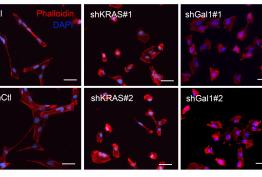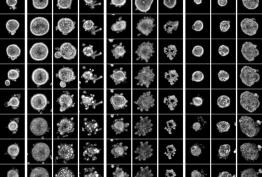CR-6 protects the ischemic brain against reperfusion injury. A) At reperfusion following focal brain ischemia, cortical cerebral blood blow recovered to basal levels in some of the rats (hyperemia, NO), whereas some animals showed a postischemic increase of blood flow higher (>20%) than basal (hyperemia, YES). In the vehicle group, n=7 rats did not develop hyperemia whereas n=16 rats did. In the CR-6 group, n=8 rats did not develop hyperemia and n=7 rats did. (A) The mean increase in cerebral blood flow (CBF) in hyperemic animals was similar in rats receiving CR-6 or the vehicle (controls). (B) In spite of differences in blood blow at reperfusion, the blood flow value during ischemia was similar in hyperemic and non-hyperemic rats receiving either vehicle or CR-6. (C) Infarct volume is larger in the vehicle group with hyperemia than in the vehicle group without, but this effect is not observed in the CR-6 treated rats as the hyperemic rats treated with CR-6 show infarct volumes significantly smaller than the hyperemic rats receiving the vehicle. (D) In the vehicle group, the neurological deficit is worse in hyperemic than in non-hyperemic rats, but there were no differences within the groups of rats treated with CR-6, * p<0.05, ** p<0.01 vs vehicle-NO; ##p<0.01 vs CR-6-NO; & p<0.05, && p<0.01, &&& p<0.001 vs vehicle-YES.
Reperfusion is the best way to protect the brain against ischemic injury and, up to now, thrombolysis with rt-PA is the only approved treatment for ischemic stroke that has shown efficacy in large clinical trials worldwide. However, thrombolysis carries some risks, such as hemorrhagic transformation, and other signs that could be associated to reperfusion injury. Researcher of the Department of Brain Ischemia and Neurodegeneration found a way to protect the brain against reperfusion injury. Two and eight hours after focal brain ischemia (90 min-occlusion of the middle cerebral artery), rats received oral administration of the antioxidant CR-6, a synthetic derivative of vitamin E that can scavenge oxygen and nitrogen reactive species. This treatment reduced the volume of brain lesion and the neurological deficit, as evaluated 1 and 7 days later. The drug reached the brain and had also a protective action on brain vasculature; it attenuated blood-brain barrier damage and oedema, leukocyte infiltration, and expression of a set of proinflammatory molecules. This treatment could benefit a subset of patients receiving rt-PA that may be at risk of developing secondary complications due to reperfusion. Pérez-Asensio et al., Journal of Cerebral Blood Flow and Metabolism 2009, Nov 11. [Epub ahead of print].






